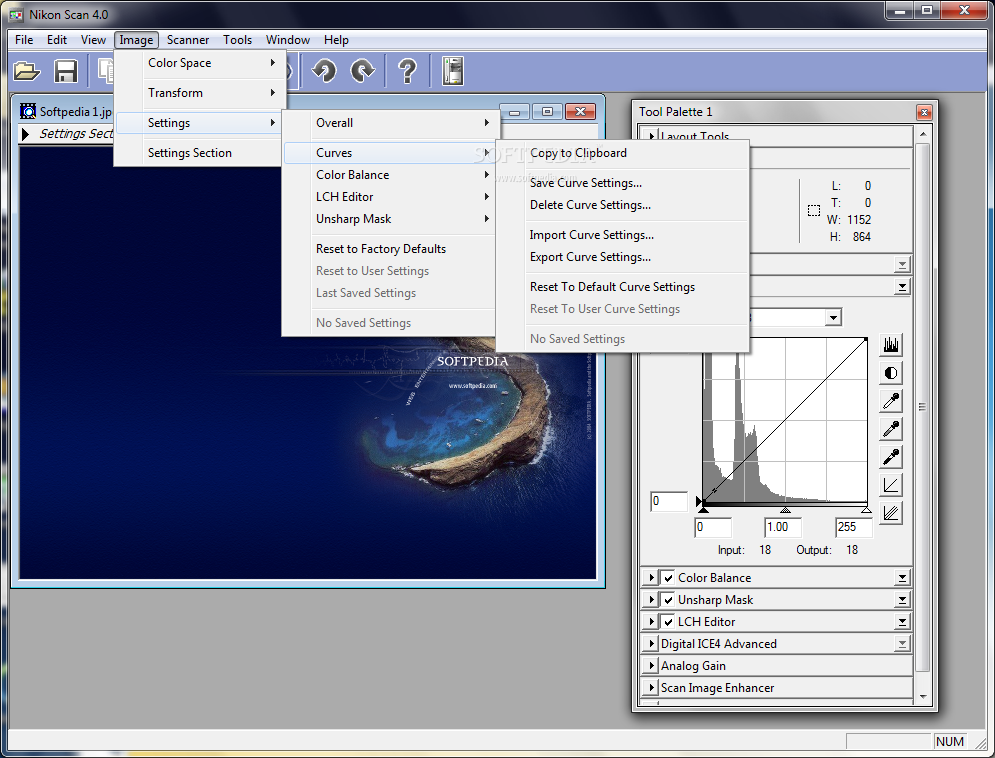

You will have to use the program to eject the film as well, and you can’t take the adapter out until the film has been ejected. Using the Nikon Scan 4 program, you can advance between frames and scan away to your hearts content.

The SA-21 will ingest the strip and be detect where each frame is. Cut your film into strips of 6 frames or less, and stick a piece in the slot. You can pull out the MA-21 and replace it with the SA-21 strip film adapter, which is the best option available for anything that’s not a mounted slide. These days most of us use color negatives or unmounted black and white negatives, so you’ll need to make sure to have one of the following adapters as well in order to actually scan anything. By itself, this adapter is fairly useless to most shooters, since it only takes 1 mounted transparency at a time. The default adapter and the one you’ll usually find in Coolscan Vs floating around on eBay is the MA-21 slide mount adapter.
#Xp driver for nikon scan 4 series#
The Coolscan V is just the scanner itself, so you will need a series of adapters in order to get film inside of it. Unlike a flatbed scanner, you can’t just stick film inside of it and hope for the best. The rest of this article focuses on the Coolscan V, but much of it still applies to the 5000 as well. I wouldn’t bother with a Coolscan IV or older, as their scan quality is far below what a modern flatbed can do. The cheaper option for 35mm is a Nikon Coolscan V, which is essentially the same as the 5000, but with older drivers. Both are the best Nikon ever made and are incredibly expensive. The newest scanners are the Nikon Coolscan 5000 (35mm) and CoolScan 9000 (medium format and 35mm). Demand, however, has remained steady, driving up prices of the few units still in the wild. Nikon made a line of fantastic digital film scanners in the 2000s, but unfortunately has ceased production of new units. The Nikon Coolscan V is limited in resolution only the film grain itself. This isn’t much of a concern when using medium format because of the massive negative, but in 35mm every grain counts if you’re looking for the best quality image possible.Ībove is a crop from area shown in the red square at 100%. However, flatbed scanners have a glass surface that sits between the scanner and the film itself, and this glass ever so slightly blurs the 35mm image. I used to use Canon flatbeds, but they’ve sadly discontinued their high-end machines. I have a Epson flatbed scanner that only costs a little less than $200 that handles medium format, Polaroids, 35mm, and anything else I can throw at it. Screwing around with dedicated film scanners like the Nikon Coolscan V is a very expensive hobby. If cost is at all a concern, get a flatbed scanner. For our purposes here, we’re assuming you’re doing it yourself and you want an insane amount of quality. The 35mm photographer has many choices in scanning that vary wildly in cost, time and quality, many of which are covered in my article on workflow. The process requires massive scanners, military-grade processors, and an excessive amount of storage. Photographers are not alone in this, as Hollywood spends millions upon millions of dollars on transferring their 35mm stock to digital (and back again). One of the most frustrating parts of the hybrid digital/film workflow is making the leap from the chemical to the digital. Updated September 2014: Added additional info I’ll integrate this information with more detail into the article when I get a chance. This works best if you do a preview on the first frame of the strip so the scanner can figure out how many frames there actually are before you do the batch scan. If multiple frames are highlighted, you can do a batch scan by hitting the ‘scan’ button.
#Xp driver for nikon scan 4 how to#
Update January 2018: I’ve been using this scanner for nearly a decade, and I finally figured out how to do batch scans with this thing! If you have the 35mm strip film adapter, after loading film, you can use ctrl to select multiple frames.


 0 kommentar(er)
0 kommentar(er)
